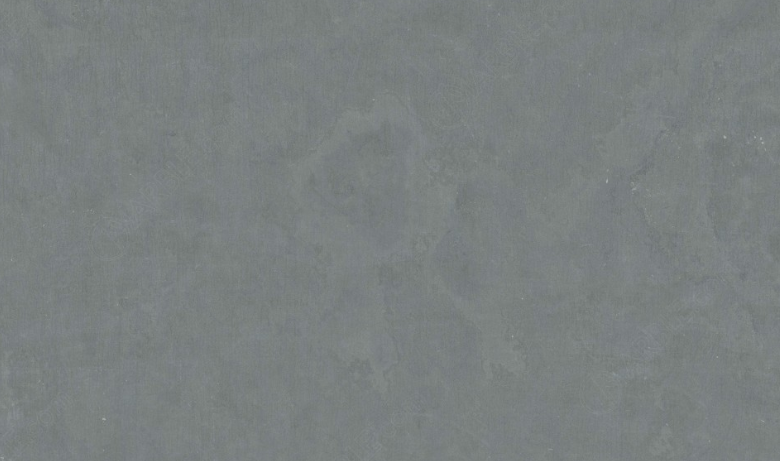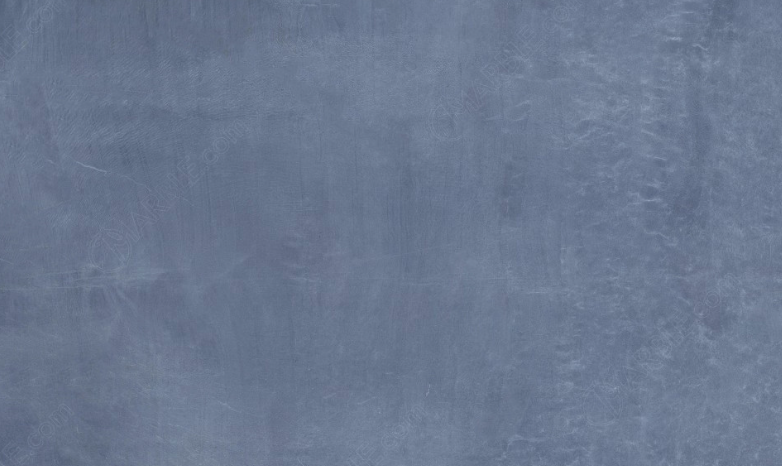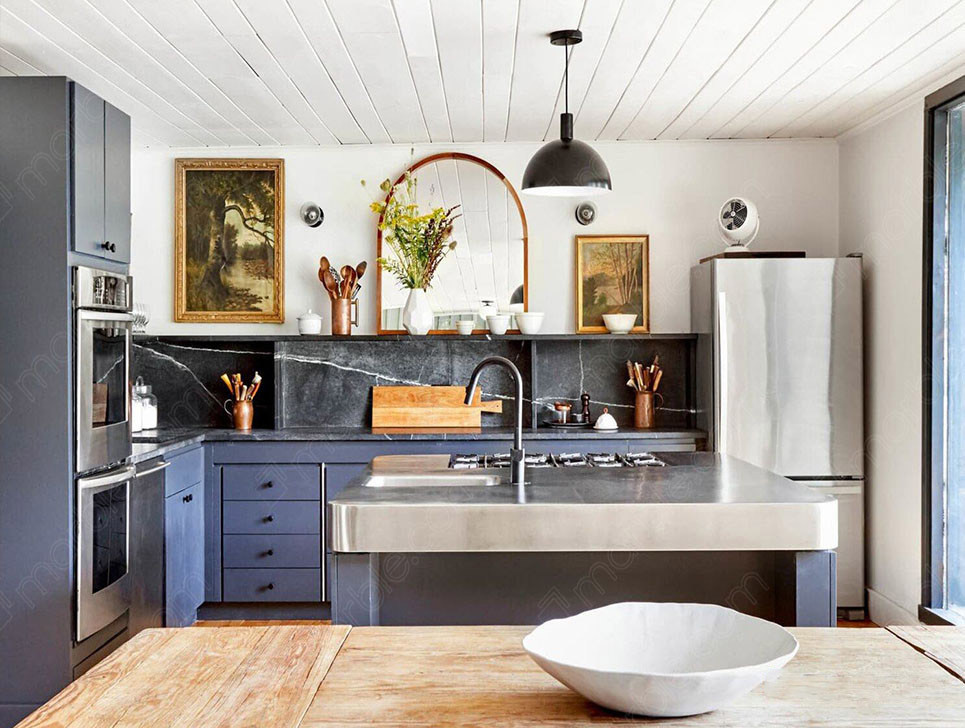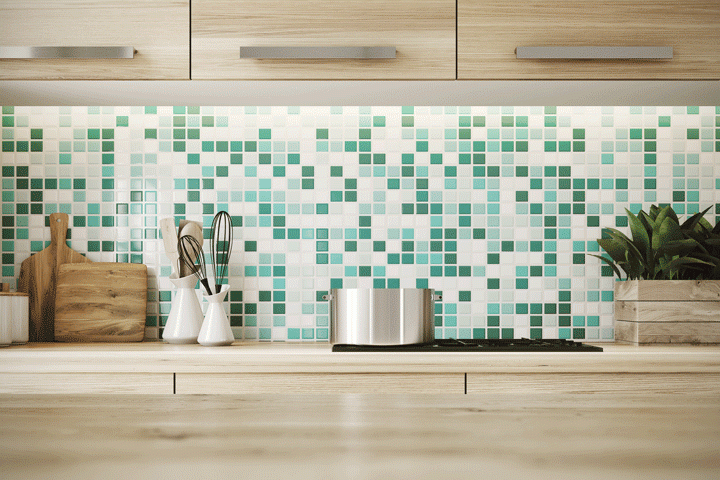Table of Contents

It is an inevitability that unless a homeowner is constantly watching and cleaning their countertops, a stain will form eventually. It is a normal process of homeownership and living that through regular wear, tear, and active use that a stain will form on your precious kitchen or bathroom countertops.
Thankfully, slate countertops are not too difficult to clean and have simple methods for removing stains. Due to their unique design and range of quality, slate can be easy to clean with only needing a few simple everyday home cleaners.
By the end of this article, you will be able to clean and remove any stain on your slate countertops, as well as know what types of chemicals to avoid using to keep them healthy.
Slate Countertop Composition
A big reason why slate is so easy to clean is because of the specific way it was formed. Slate is a metamorphic rock where mud and other minerals are continually layered upon each other, then pressed together by magma and pressure from the Earth’s crust. This layering method gives slate more protection for liquids to slide off the stone instead of being absorbed into it.
Is Slate Porous?
Slate’s porosity can range, depending on the quality of the stone. High-quality slate will have fewer pores and pitting, making it more resistant to staining. Low-quality slate will have more pores and pitting, allowing stains to sink deeper into the slab. The farther the liquids sink into the slab, the harder it will be for the stain to be removed.
Can Slate Handle Staining?
Slate is a very durable stone which, depending on the quality, can resist several types of stains. As the long surface has few pores, slate is a safe choice to install as kitchen or bathroom countertop material, as well as an accompanying backsplash.
How to Clean Slate Countertops
Cleaning slate countertops can be exceptionally easy once you have been provided the correct materials and cleaning supplies. We would suggest having a container or separate organized space specifically to house these products, labeling them specifically as countertop cleaning supplies.
Materials to Clean Slate Countertops
· Microfiber cloth: softer than regular dish rags or washcloths to leave less streaks and absorb more liquid.
· Regular cloth: something to be used after cleaning to remove excess water and moisture from the countertop.
· Bucket of warm water: simple bucket with warm water to help rinse off countertop and dilute cleaning agents for safer use.
· Mild Dish Soap: mild or soft dish soaps have less harsh chemicals in them to effectively clean slate without dulling the finish.
· Neutral pH Cleaner: an alternative to a mild dish soap which can be used to clean slate.
· Slate Specific Cleaners: stone countertop companies have cleaning supplies which are safe to use for stone countertops.
· Rubber Gloves: optional item for anyone who does not want to get their hands directly dirty or wet.
Note that you should not mix any cleaning products without direct instructions on their printed label. Many strong chemicals can form toxic gasses which can harm you and your countertops if caution is not taken.
Method 1: Microfiber cloth only
This method is best used for removing dust and dry-cleaning slate countertops.
Step 1: Remove everything from the countertop so there is nothing on the surface anymore.
Step 2: Use the microfiber cloth to systematically wipe down the countertop so it is free from dust.
Method 2: Dish Soap and Warm Water
This method is best used for cleaning up regular spills, messes, and routing cleaning.
Step 1: Remove everything from the countertop.
Step 2: Mix a small amount of mild dish soap with warm water.
Step 3: Dip the microfiber cloth into the soapy water, wringing out excess water in the bucket.
Step 4: Wipe down every inch of the countertop with the damp rag.
Step 5: Rinse off the countertop with just warm water to remove any soap residue.
Step 6: Use a separate washcloth to dry the countertop to remove excess moisture.
The mild dish soap can be swapped with a neutral pH cleaner or a specific slate countertop cleaner. When using a slate specific cleaner, follow the instructions on the bottle for cleaning.
Removing Stains from Slate Countertops
When spills are left to sit for too long, they will evaporate or sink into the stone slab to form stains. Depending on the severity of the stain and what chemical has blemished the countertop, different methods can be used to remove them.
Method 1: Mild Dish Soap and Warm Water
This method is essentially the same technique to the general cleaning guide from above, but with an extra step to focus on the stain.
While initially wiping down the countertop with the damp rag, apply a small amount of pressure onto the stained area. Use enough pressure to wash out the stain, but not enough that it feels like you are straining yourself with scrubbing the countertop.
After gently scrubbing the stained area, rinse off the surface with warm water and dry with a separate rag.
Method 2: Rubbing Alcohol and Warm Water
For stains that are slightly stronger than normal food stains, obtain a bottle of rubbing alcohol and follow these steps.
Step 1: Mix a small amount of rubbing alcohol with a cut or bottle of warm water.
Step 2: Dip the microfiber cloth into the water-alcohol solution, wringing out any excess in the container.
Step 3: Wipe the stained area on the countertop in a slow circular motion, applying gentle pressure to remove the stain.
Step 4: If the stain remains, re-dip the rag into the water-alcohol solution and rub the stain again. Continue until the stain is removed.
Step 5: Use plain warm water to wash off the countertop and dry with a separate rag.
This method can also be used with Hydrogen Peroxide. Do not mix rubbing alcohol and hydrogen peroxide together as the combination can be too strong for the stone and cause etching. Only use one cleaning solution at a time.
Method 3: pH Neutral Cleaner and Damp Cloth
This method is a little stronger than the rubbing alcohol or hydrogen peroxide process. In case the previous method fails, use the following steps.
Step 1: Combine a small amount of a pH neutral cleaner into a bucket of warm water.
Step 2: Dip a microfiber cloth into the solution, wringing out excess water.
Step 3: Place the damp cloth onto the stained area, letting it sit for 10-15 minutes.
Step 4: Remove the cloth to see if the stain has loosened. Wipe away the stain with the damp cloth.
Step 5: Rinse the countertop with warm water and dry with a separate dish cloth.
Method 4: Slate Countertop Cleaners
Certain countertop cleaners like Stonetech offer excellent products which are formulaically designed to remove stains without damaging the stone slab. These products have different instructions, depending on the severity of the stain. When using one of these products, you should follow the instructions extremely carefully.
Method 5: Water and Baking Soda
For homeowners who like to do things themselves without paying extra for cleaners, baking soda is an excellent cleaner for stone countertops. Baking soda is more abrasive than other cleaners, so use caution when applying this to slate countertops.
Step 1: Grab a box of baking soda and sprinkle it into a bucket or warm water.
Step 2: Mix the concoction together until it forms a loose paste.
Step 3: Using a spatula or non-sharp spreader, spread the baking soda paste onto the stained area.
Step 4: Let the mixture sit overnight or 24 hours, depending on how deep the stain is.
Step 5: Use a gentle scraper to remove the hardened material, and rinse off the remainder with warm water.
Step 6: Use a separate washcloth to completely dry the countertop.
[get_quote]
Tips to Keep Slate Clean
Slate countertops do not need extraneous effort to keep clean, but routine upkeep is the secret for their resilience.
· Wipe Spills Immediately: Cleaning spills quickly before they can dry and seep into the stone is the best option of preventing stains from forming.
· Avoid Harsh Chemicals: Strong home cleaners like bleach, ammonia, vinegar, rust cleaners, grime cleaners, etc. are all very strong and damaging to stone countertops. Without proper dilution, they can stain or permanently etch the stone where it may need to be replaced.
· Sealing: Slate oil or teak oil are highly effective in providing an added layer of protection to slate countertops, covering them in a gentle covering to prevent stains from forming.
· Caution with Hot Objects: Do not place hot objects directly on slate countertops. Slate is remarkably heat resistant, but scorching metals like pots and pans can leave burn marks. Use hot pads and trivets to keep slate stone safe.
· Cutting Boards: Slate is resistant to scratching and scrapes, but it is unwise to directly cut on slate or any stone countertop. Use a cutting board to chop food and avoid damaging the stone over time.
· Avoid Abrasive Objects: Use caution or avoid using strong abrasive objects like scrubbing brushes. These objects can dull and etch the stone as they will scratch the finish with active use. If you need a scrubbing brush to remove mineral deposits from water stains or food residue, use a soft scrubbing brush or fine steel wool while using a gentle scrubbing technique.
Conclusion
As you can see, slate countertops are not that difficult to clean. In many ways, they are similar to how other countertops should be cleaned.
With these methods at your disposal, you are now well equipped to take on any stain and keep your slate countertops clean and pristine for a long time.


















 The article helped me immensely
The article helped me immensely
 I’m now more informed on the subject
I’m now more informed on the subject
 I have questions about Marble.com
I have questions about Marble.com
 The article was not accurate at all
The article was not accurate at all
 There is a serious lack of information
There is a serious lack of information
 I have questions about Marble.com
I have questions about Marble.com